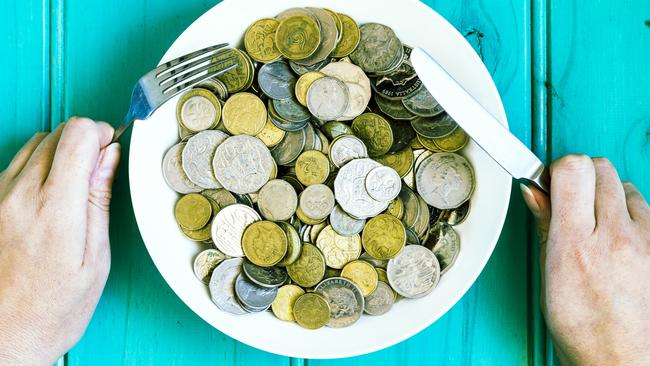Food costs are still climbing, so here’s how to save
With the cost of living crisis driving grocery prices through the roof now's a great time to look at ways to cut spending on your weekly shop, with big savings possible.
Business
Don't miss out on the headlines from Business. Followed categories will be added to My News.
The past four days of food overload – much of it Easter chocolate – is enough to put anyone’s mind off meal choices, but in a cost-of-living crisis every dollar saved is valuable.
Grocery costs have been climbing sharply for a couple of years, and the prices for some products are rising at twice the pace of overall inflation.
The latest monthly Consumer Price Index data from the Australian Bureau of Statistics highlighted a 7 per cent rise for bread and cereal products in the past year, a 4.9 per cent jump for non-alcoholic drinks and a 4.2 per cent rise for dairy products. Overall annual inflation is running at 3.4 per cent, the ABS says.
So how do you keep a lid on rising food costs? Here are 10 tips to consider.
1 SHOP WITH A LIST
The quickest path to wasting money on food is wandering aimlessly down supermarket aisles with no plan of what you need. Never leave home without a shopping list, and experts often suggest limiting shops to once per week – as this cuts your chance of impulse buying.
2 LEFTOVER LUNCHES
Research commissioned by Samsung Australia found Australians spend an average $17 per takeaway lunch – totalling about $4000 a year.
That’s a lot more than making a sandwich, or cooking a little extra for dinner the night before and enjoying tasty leftovers for a day or two.
3 ONE WEEKLY TREAT
Rather than buying meals daily, reward yourself once a week with a tasty takeaway lunch or dinner. That way it does not become a habit that automatically swallows chunks of your disposable income, and instead is a treat to look forward to.

4 WEEKEND CHEF
Some savvy savers spend time on weekends cooking a week’s worth of healthy, nutritious meals. It takes the stress away during busy weekdays and stops dodgy decision-making from tired brains at the end of a workday.
5 THE FREEZER’S YOUR FRIEND
Rather than eat the same leftovers day after day, freeze some for use later. KitchenHand.io founder Kate McHugh says this food should be labelled and dated for easy identification “Many dishes, such as casseroles, soups, and baked goods, can be frozen and enjoyed at a later date,” McHugh says.
6 STORE WELL TO SAVE
Be sure to store perishable items such as meat, dairy and eggs in the fridge at the correct temperature, McHugh says. “Use airtight containers to store leftovers and keep them fresh for longer,” she says.
7 SERVE SMALLER PORTIONS
People can always go back for seconds, but putting less food on their plate initially can reduce wastage and prevent overeating.
8 LET PEOPLE SERVE THEMSELVES
“Allowing individuals to serve their own portions empowers them to make choices based on their unique preferences and dietary needs,” McHugh says. “Each person has different appetite levels, taste preferences, and dietary restrictions.”
9 BUY IN BULK
Check supermarket sites and shopping apps to find discounted non-perishable items. There are apps that simply tell you what items are on sale for half price, so you can stock up on bargains.
10 USE UNIT PRICING
The best way to spot good deals in supermarket aisles is to check unit prices of items, such as their cost per litre or 100 grams. This is shown on the shelf and will tell you if a special is really a special, or if the bigger package is still better value.
More Coverage
Originally published as Food costs are still climbing, so here’s how to save





